#liang shanbo and zhu yingtai
Text
The pause wasn't long, uh. Well.
My tag for this series is 'fairy tales'.
#polls#fairy tales#folktales#town musicians of bremen#johnny appleseed#the blue bird#the goose girl#the headless mule#butterfly lovers#liang shanbo and zhu yingtai#the frog princess#father frost#the wounded lion
18 notes
·
View notes
Text
youtube
listening to the butterfly lovers violin concerto, 梁山伯与祝英台 (one of the most famous pieces of chinese orchestral music ever written) on repeat today… yes this is about the spirealm
#music#god it’s beautiful i forget how much i love it#for context#nanzhu describes love as liang shanbo and zhu yingtai in that ep 72 monologue#it’s a famous chinese folktale about a girl who goes to school in disguise as a boy (as women weren’t allowed to go)#and falls in love with a boy there (who thinks she’s actually a boy)#eventually he finds out and they pledge to marry but her family bethrothes her to someone else#he dies in heartbreak and as her marriage procession passes by his grave she leaps out of the carriage and goes to it#the ground splits open and she throws herself into the grave and they emerge as two butterflies who fly away and are together forever#this concerto tells that story
3 notes
·
View notes
Text
god i just remembered that butterflies are symbolic of rebirth, and a pair of butterflies flying together symbolises love. (in chinese culture)
but i also just learnt that butterflies are symbolic of the arrival of your soulmate. and that white butterflies symbolises that someone is watching over you from the heavens. and that sometimes, butterflies were once thought to be lost souls.
hua cheng's sliver butterflies. (sliver is basically shiny white.)
he first appears as a lone butterfly before xie lian during the ghostgroom arc.
his 'rebirth' as a powerful calamity. (are ghost fires lost souls?)
him watching over xie lian as hong-er, wuming, etc, over eight centuries.
in the legend of the butterfly lovers (from which im pretty sure the pair of butterflies flying together symbolising love originated from), liang shanbo and zhu yingtai are reunited due to a wedding procession. (sounds romantic, but i promise you its not. zhu yingtai refuses to be wed to some other guy and as she stops by liang shanbo's grave - long story - to pay respects, the grave suddenly opens and she throws herself in. their spirits then turn into butterflies)
hualian are also reunited through a wedding procession.
#screaming crying sobbing#hualian#xie lian#hua cheng#tcgf#mxtx tgcf#mxtx#heaven official's blessing#midnight epiphanies from being royally screwed by the 754329 things i have due this week
239 notes
·
View notes
Text
Sudden guest post under my music tag.
My friend @erlenwein recently introduced her students to the different styles of Chinese opera. She also showed a video of these styles to me with some commentaries and I asked her to translate them into English (these commentaries very much expanded in the process).
youtube
Fragments of 2024 Lunar New Year Gala from CCTV-1 (main TV channel in Mainland China)
Here are @erlenwein 's commentaries:
1:33
Beijing opera 京剧 presented by two laodan 老旦,the role of older women. The play they're presenting is called ”杨门女将“ ("The female generals of the Yang family"), one of many plots based on the fictionalized story of the military Yang family (Song dynasty period).
https://en.wikipedia.org/wiki/The_Generals_of_the_Yang_Family
2:36
Yuju 豫剧 (Henan opera), Kunqu 昆剧 (around Shanghai, one of the oldest forms of Chinese opera), presented by wenchou 文丑 (comical role, in this case literati). The name of the piece ( “话梨园” ) can be translated as "Talking about the Pear garden" (Pear garden being the metaphorical name for the opera world), but I couldn't find any specifics, and I frankly couldn't be arsed to read the subtitles, sorry.
Fun fact: the white patch on their faces is called 'a piece of tofu'.
3:15
Chuanju 川剧 (Sichuan) presented by a huadan 花旦. The play is ”别洞观景“ ("Looking from a different side of the cave"? Seems like it). The main character singing is 白鳝仙 (Immortal White Eel?) who came to the world of mortals. Check out her use of pheasant feathers!
Usually the most known thing about Sichuan opera is their technique of 变脸, changing the masks really fast, but they decided to showcase a different role here.
https://www.youtube.com/watch?v=5ayy7wcfeHU - Face-changing performance.
3:57
Chaozhou (Teochew) opera 潮剧 (Chaoshan region, southern Fujian and eastern Guangdong), presented by xiaosheng 小生 (young man, usually a romantic character) and huadan 花旦 (young woman in a romance plot). The play is “苏六娘” ("Su Liuniang").
4:34
Pingju 评剧 (Hebei opera), presented by huadan 花旦. The play is “花为媒” (“Matchmaking flowers").
5:07
Yueju 越剧 (Shaoxing opera, from Zhejiang), presented by xiaosheng 小生 and huadan 花旦. Both performers are women — it's typical for Yue opera, since the art form switched to primarily female troupes in 1930s. The play presented is “梁山伯与祝英台” ("Liang Shanbo and Zhu Yingtai"), a very popular story often referred to as "Chinese Romeo and Juliet". You might've seen it also being called "Butterfly Lovers".
6:31
This part is just called 武戏, "military opera". It starts with a wuchou 武丑, comical military role, then wusheng 武生 (military male role) and wudan 武旦 (military female role) come out to present their fighting, juggling, and acrobatic skills. The flags behind their backs show their status as generals/officers.
I can't imagine the skill needed to do this all so seemingly effortlessly.
*I've seen mentions that the flags 靠旗 represent an army under the command of the character wearing them, but I can't find any info on it again to back up my claims. If you know something about it, please let me know!
The piece is titled “杨威奋勇” (I'm not quite sure how to translate it, but it seems to refer to the Yang family again).
8:32
And back to 京剧 with laosheng 老生 (older men, also known as bearded sheng 须生). The play is “龙凤呈祥” ("Dragon and phoenix bringing prosperity").
12 notes
·
View notes
Text
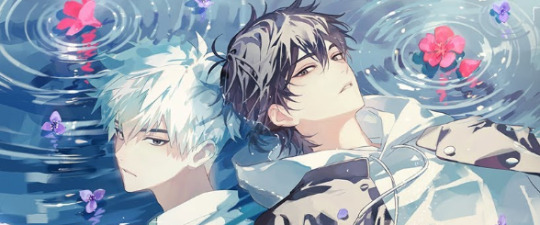
Thinking tl;dr thoughts about how Link Click clicks with the butterfly leitmotif just as well as the other wuxia donghwa because:
1. The Butterfly Lovers: One of the great Chinese tragic love stories of its time, centered around the romance of Liang Shanbo and Zhu Yingtai who were soulmates but fate kept tearing them apart, and were only able to finally reunite after death when they are reincarnated as butterflies. Much like its theme of ill-fated soulmates, the pair seemed trapped in an inescapable fate that threatens to keep them apart.
2. The Butterfly Effect: Part of the Chaos Theory, the butterfly effect is the idea that small, seemingly trivial events could ultimately result in something with much bigger, unpredictable consequences. Key word here is unpredictable. This very much is a concept that is reflected in this series, on how Xiaoshi's... and later on, Lu Guang's actions, had resulted in changes in the timeline, with the final revelation being that Lu Guang's one action had led to the future being completely altered, but at what cost to follow?
3. Xiaoshi and Lu Guang as yin/yang butterflies: Butterflies in Chinese culture, for the most part, are good omens, symbolizing "rebirth" and "transformation". However, the conundrum is that for transformation and rebirth to occur, it implies there must be certain "loss" or "death". Most butterfly species also have very short lifespans, which directly mirrors Xiaoshi's life cut short. Far as symbolism goes, I see them as a Yin/Yang dynamic, so Xiaoshi would be a black one (like a Black Swallowtail) to Lu Guang's white (like a Cabbage white), but what gels perfectly in my brain about these two species is that not only do they contrast each other in almost every way (size and flashiness?), a white butterfly is specifically thought to represent the spirits of the dead revisiting their loved ones (see also: 1.) and I am alluded, ironically, to the imagery of Guang being the soul from "another world" returning to the past in search of his lost soulmate, and now existing in an alternative timeline, a world where he actually doesn't belong to... and must eventually let go of.
Just something to think about.
#Link Click#shi guang dai li ren#时光代理人#Cheng Xiaoshi#Lu Guang#Thinking out loud#Yes I know that other wuxia already commandeered butterflies but this reference is as old as time so I call equal dibs#Lu Guang's always had this “otherworldly” vibe about him and I also see him akin to a moth that's drawn to a flame :*)#Chinese fiction w/o butterflies is like milk tea w/o boba#Yin/yang butterflies also has added layered feels that their souls might not even be able to reunite after departing the present world#What's a little angst amongst fam
25 notes
·
View notes
Text
ML Meta Theory: Chinese legend “Butterfly Lovers”
I just realized that I never got around to talk about the Chinese legend 梁山伯與祝英臺 (Liang Shanbo and Zhu Yingtai) - or the title its mostly referred to in English: Butterfly Lovers – and that I think its quite possible that this tragic tale is the reason why the Butterfly Miraculous specifically is the villain in Miraculous and Marientte’s and Adrien’s love story, even though Butterflies aren’t exactly that special of animals in Chinese cultures.

(Statue: Liangzhu Culture Park)
Disclaimer: As per usual, I’m of no country of the Asien continent and I also have no family roots there I’m taking this from. I’m one person who is very interested in culture and literature and research is all I can do in this regard at the moment.
So if my post contains false information, misrepresentations or other points, please let me now.
Butterfly Lovers was selected as one of China's Four Great Folktales by the "Folklore Movement" in the 1920s and I’ve gotta be honest, this is such a spot on “civilian Ml-Love-Square” way for a romantic couple to tragically never reach each other and then die in the end, I would find it surprising if it didn’t at least have SOME influence on the show.
Cause the Love Square WOULD
Zhu Yingtai is the ninth child and only daughter of the wealthy Zhu family of Shangyu, Zhejiang. Although women are traditionally discouraged from taking up scholarly pursuits, Zhu manages to convince her father to allow her to attend classes in disguise as a man. During her journey to Hangzhou, she meets Liang Shanbo, a scholar from Kuaiji. They chat and feel a strong affinity for each other at their first meeting. Hence, they gather some soil as incense and take an oath of fraternity in the pavilion of a wooden bridge.
They study together for the next three years in school and Zhu gradually falls in love with Liang. Although Liang equals Zhu in their studies, he is still a bookworm and fails to notice the feminine characteristics exhibited by his classmate.
One day, Zhu receives a letter from her father, asking her to return home as soon as possible. Zhu has no choice but to pack her belongings immediately and bid Liang farewell. However, in her heart, she has already confessed her love for Liang and is determined to be with him for all eternity. Before her departure, she reveals her true identity to the headmaster's wife and asks her to pass a jade pendant to Liang as a betrothal gift.
Liang accompanies his "sworn brother" for 18 miles to see her off. During the journey, Zhu hints to Liang that she is actually a woman. For example, she compares them to a pair of mandarin ducks (a symbol of lovers in Chinese culture), but Liang does not catch her hints and does not even have the slightest suspicion that his companion is a woman in disguise. Zhu finally comes up with an idea and tells Liang that she will act as a matchmaker for him and Zhu's "sister". Before they part, Zhu reminds Liang to visit her residence later so he can propose to marry her "sister". Liang and Zhu reluctantly part ways at the Changting pavilion.
Months later, when Liang visits Zhu, he discovers that she is actually a woman. They are devoted to and passionate about each other and they make a vow to the effect of "till death do us part". The joy of their reunion is short-lived as Zhu's parents have already arranged for her to marry a wealthy merchant, Ma Wencai. Liang is heartbroken when he hears the news and his health gradually deteriorates until he becomes critically ill. He dies in office later as a county magistrate.
On the day of Zhu's marriage to Ma, strong winds prevent the wedding procession from escorting the bride beyond Liang's grave, which lies along the journey. Zhu leaves the procession to pay her respects at Liang's grave. She descends in bitter despair and begs for the grave to open up. Suddenly, the grave opens with a clap of thunder. Without further hesitation, Zhu throws herself into the grave to join Liang. Their spirits emerge in the form of a pair of butterflies and fly away together, never to be separated again.
The Love Square WOULD!
Switch their roles out at several points and you do have a pretty strong Love-square tragic love story and I simply found that way too fitting to be a mere coincidence.
Again, it’s one of China's Four Great Folktales and the Butterfly has always seemed like an odd choice for the villain of this show, which does intergrade a lot of references in the narrative and characters to for example the Chinese numbers and the Zodiac system, their meanings and relations (Post here)
So this doesn’t seem that far-fetched at all, and in my opinion it just FEELS extremely right for Le Papillion’s/ Hawkmoth’s role in the show without making him culturally inappropriate since Gabriel is a white man, terrorist and child abuser. He, as the villain, is the narrative manifestation of “Butterfly Lovers” but without having him as an actual PERSON be its embodiment.

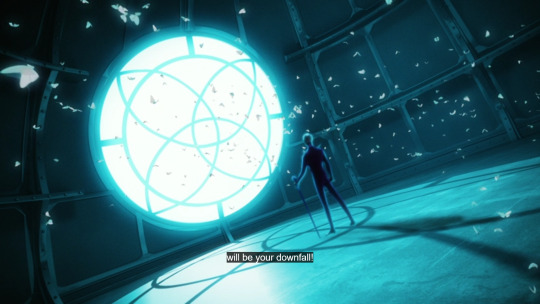
#Let's be real the Love Square WOULD die like this#This is in character for them just packed in a different story approach#ml theory#Ml meta theory#Chinese legend Butterfly Lovers#Ml love square#Butterfly Miraculous#Ml Chinese influence?#Marinette Dupain-Cheng#adrien agreste#gabriel agreste#le papillon#hawkmoth
70 notes
·
View notes
Photo
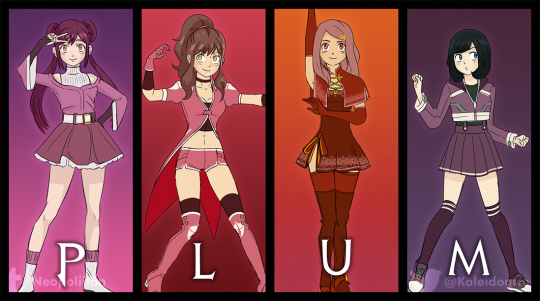

Oh boy, two whole new teams! I didn’t have it in me to finish the fully posed art so you’ll have to make do with the concept sketches.
Team PLUM was created as a magical girl style first-year student team by @mercurryblack based on female protagonists from romantic Chinese folk tales.
As soon as I saw them, I was like “so we have a team of magical girls who are named after purple fruit who allude to female protagonists from Chinese folk tales. How about a team of manwhores named after yellow fruit who allude to their love interests?” And Team LMON was born to be PLUM’s boyfriends. A Team of 4 dating a Team of 4.
Details under the cut:
PLUM:
Plum Shantung:
The leader of PLUM. Fun-loving and quirky, but possesses a nasty jealous streak verging on the yandere. If another girl talks to her boyfriend, Mango, it’s at their own peril.
Her semblance, “Medium”, allows her to bond with one person - making both of them able to see through each others’ eyes.
Her weapons take the form of Hook Swords.
She alludes to the Weaver Girl from The Cowherd and the Weaver Girl.
Lychee Nolina :
Originally from Avon, Vale, Lychee is the older of two half-sisters via a shared father. Her mother is financially well off, allowing Lychee to attend Haven Academy while her half-sister languishes in Avon’s second-rate combat school. Lychee is still coming to terms with being passed over as leader of PLUM, her mother's self-entitled influence having worn off on her somewhat.
Her semblance, “Medium”, allows her to shed a layer of her aura, removing the damage and healing her slightly, as well as making her feel refreshed. Is dangerously vulnerable in the first few moments after it is used. Acts as a sort of second wind.
Her weapon is named Altissima.
She alludes to Bai Suzhen/Madam White Snake.
Umecho Sekinetsu :
From one of Mistral’s more prestigious families, Umecho has a lot to live up to - her elder sister won a Vytal festival ten years ago and she hasn’t heard the end of it. The “mom” friend of Team PLUM, Umecho doesn’t take into account how much she pushes herself while taking care of her team or attempting to live up to her sister’s glory.
Her semblance, “Swarm”, projects light-based butterfly shaped homing projectiles.
Her weapon is named Metalmark.
She alludes to Zhu Yingtai from The Butterfly Lovers.
Mei Xanadu:
Mei is a curious case; despite her diminutive stature and complete lack of muscle definition, she is somehow one of Haven’s physically strongest students. What she completely lacks in terms of brains, she makes up for in her ability to lift a car above her head. Mei is literally so dumb that she found a way to speak with Every Word Capitalized, and is often found with her eyes glazed over after having forgotten to exist.
Her semblance, “Breakthrough”, makes her able to detect or ‘feel’ weak points in inanimate objects.
Her weapon is a pair of gauntlets named Blockbuster.
Alludes to Lady Meng Jiang.
LMON:
Limon “Li” Nikau:
Li is easily the smoothest customer on Team LMON. Confident without seeming vain, comfortable in any scenario - and he’s bold enough to pull off the Male Boob Window/Leather Pants combo. There are very few people in the world who can find anything to hate about Li, and he’ll easily win over anyone with a grudge.
His semblance, “Air Burst”, allows him to “fire” compressed air from his body like an air cannon,
His weapons, Albedo, take the form of folding swords (think a giant switchblade) that turn into dual pistols.
Alludes to Liang Shanbo from The Butterfly Lovers.
Mango Marula:
Easily the cockiest of Team LMON, Mango is a self-proclaimed heartthrob. Despite his confidence and decent looks, he always had trouble with getting a date - until he met Plum. Now he thinks he’s a god amongst men because his girlfriend is so devoted to him, ignorant of her willingness to destroy anyone who threatens to drive them apart.
His weapon is named Zest, and takes the form of a shepherd’s crook/grappling hook/hunting rifle.
He doesn’t have a defined semblance, but it’d be something to do with bridges - either metaphorically or literally.
He alludes to the Cowherd from The Cowherd and the Weaver Girl.
Yuzu Ogonkan:
Broad, Big and Built, Yuzu is a man of few words. Many are entirely unsure if he can even speak outside of throaty growls and wordless roars in combat. Strangely his wordlessness led to a bond (and eventual romance) with Mei Xanadu who can’t seem to stop talking. Perhaps her deceptive strength earned his respect, as he is deathly loyal to the brainlet, the only person he lowers his walls for.
His semblance, “Cobble,” allows him to summon small rocks to his body to form a sort of rudimentary armour.
His weapons, Rind, are two huge bladed knuckles. Imagine Wolverine’s claws mounted on gauntlets.
She alludes to Lady Meng Jiang’s... husband. Who got crushed by the Great Wall.
Xun Ningmeng:
Where Yuzu is a terrifying eight feet tall, LMON’s resident Manlet is barely over five feet. Xun is a studious, sensitive young fellow, which caught the eye of the more bold Lychee Nolina. Eager not only to date Xun but to help him more combat-viable, Lychee convinced Xun to take up more physical training - Xun agreed... on the condition he could have free rein of her wardrobe, and now she keeps finding him wearing her thigh high socks.
His semblance, “Standby”, allows him to go into a meditative stasis-like state where he doesn't think, feel or perceive the passage of time.
His weapon is a pair of beartrap-like jaws on chains, named Flytrap.
Alludes to Xu Xian.
#rwby#rwby art#rwby fan art#rwby oc#rwby original character#oc#rwby fanart#art#fanart#team plum#team lmon#plum shantung#lychee nolina#umecho sekinetsu#mei xanadu#limon nikau#mango marula#yuzu ogonkan#xun ningmeng
70 notes
·
View notes
Text
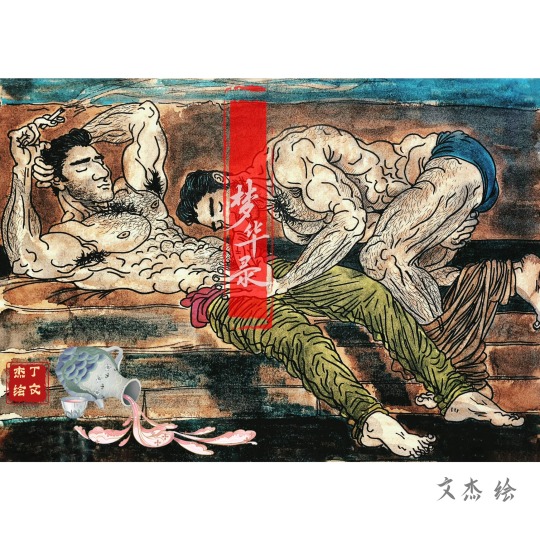
Liang Shanbo and Zhu Yingtai (censored version) from Ding Wenjie personal painting
2 notes
·
View notes
Text
Stara kineska legenda kaže da iako su Liang Shanbo i Zhu Yingtai bili razdvojeni i osuđeni na život jedno bez drugog, jer je ona bila obećana drugome, ipak pronašli put jedno do drugog na dan kada je grom prepolovio Liangov grob i ona se bez razmišljanja bacila k njemu. A u momentu poslije njihove duše su se spojile i preobrazile u dva leptira što izletješe iz groba. I nakon toga, u tom posve novom životu, Liang Shanbo i Zhu Yingtai nikad više ne bijaše razdvojeni.
A pored svega toga leptiri predstavljaju simbol posvećenosti, jer za života imaju samo jednog partnera.
- And I think that is beautiful.
5 notes
·
View notes
Text
Butterfly Lovers(梁山伯与祝英台)
Logline:
In ancient China, during a period of turmoil, a student couple deeply in love faced staunch disapproval and eventual separation imposed by their parents. Tragically, the young man fell gravely ill and succumbed to his illness. On the day she was to be married to another, the heartbroken woman leapt into his grave in grief. Miraculously, from this act of profound love and sorrow, they transformed into butterflies, reuniting at last in a form beyond the reach of societal constraints.
Opinion & Analysis:
Ancient Chinese marriage has always been decided by the parents, pay attention to the marriage, do not allow men and women free love, the last story Zhu Yingtai in the wedding day jumped into Liang Shanbo's grave, both of them become butterflies. This story reflects the young men and women's resistance to the secular and power, the pursuit and yearning for freedom and love, and also criticizes the complex social relations and strict social classes in ancient China.
In addition, women were not allowed to go to school in ancient China, so Zhu Yingtai dressed as a man and left home to study at the beginning of the story, reflecting the autonomy and bravery of women. However, after a long period of accepting the rigid and outdated feudal etiquette, Zhu Yingtai's personality changed from lively to dull, satirizing the bondage of feudal etiquette to human nature, and this conflict change is also common in other Chinese folk stories.
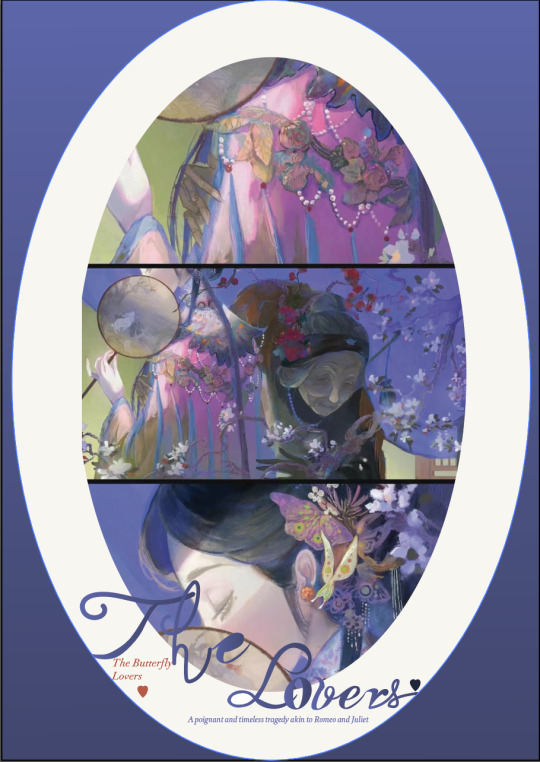
1 note
·
View note
Text
Suzhou Entertainment Guide | April 3 - 9
The Butterfly Lovers Dance Drama
Time: 7:30 p.m., Apr. 3-4Venue: Zhangjiagang Poly Grand Theatre张家港保利大剧院Tickets: RMB680/480/380/280/180/100/30 yuan
Based on the love story between Liang Shanbo and Zhu Yingtai, the drama integrates multiple art forms such as acrobatics, dancing and play.
The Anatomy of the Piano Multimedia Music Story-telling Session
Time: 7:30 p.m., Apr. 6-7; 2:30 p.m., 5:30…
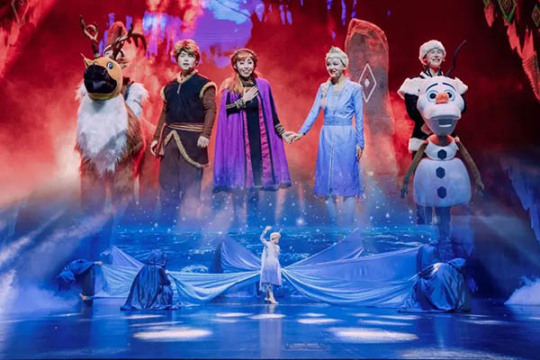
View On WordPress
0 notes
Text
Shaw Brothers - A Retrospective Analysis
Posted on November 14, 2021 on grimoireofhorror.com and The Yurei
If you enjoy martial arts films, then you have probably heard of the incredible Shaw Brothers, one of Hong Kong’s biggest and most significant film production companies of all times. Having over 800 films made over nine decades and winning hundreds of awards, their name is synonymous with cinema all over the world. But, who are the people behind this behemoth of a film company and how did they become so internationally renowned?
Early History
In 1924, three brothers - Runje, Runme, and Runde Shaw - founded Tianyi Film Company (also known as “Unique Film Productions”) in Shanghai, China. This company was one of the big three production companies in pre-second world war China. Tianyi produced their own style of silent movies, extensively focusing on traditional literature, legends, and myths such as The Lovers (based on the legend of Liang Shanbo and Zhu Yingtai).
After becoming frustrated with local distributors, the Shaw brothers set up their own cinema, “The Empire”, to screen their movies. Led by Runme and Run Run (the youngest of the brothers), they began to branch out into other countries such as Malaysia to build new cinemas and operate a mobile cinema for rural areas. However, it was only with the advent of sound that movies began to really push forward. By 1933, the Shaw’s had produced the Cantonese opera film Normal Dragon or White Gold Dragon(based on the eponymous legend), which proved a breakthrough for them in both Singapore and Hong Kong.
In the following years, the emergence of the Great Depression caused a significant decline in cinema attendance. The Shaw’s began to produce films locally to minimise costs and also diversified into theme parks and other live attractions. By 1939, the Shaw’s had amassed a business empire of 139 cinemas across South East Asia.
However, by the time of the World War 2, the Japanese had invaded Singapore and seized a lot of the Shaw’s assets, and they were forced to use their cinema to display pro-Japanese propaganda movies. The company’s main studio was destroyed during The Battle of Shanghai and Run Run Shaw was even arrested for a period of time. After the second world war, the Shaw’s regrouped and their operations once again expanded into further cinemas and focused more on film production.
The Beginning of Shaw Brothers
After Japan’s occupation of China had been broken, Runme and Run Run took over the film production business of its Hong Kong-based sister company, Shaw & Sons Ltd, and in 1958, a new company, “Shaw Brothers”, was founded.
The company gained popularity for their period music dramas that had become popular around the time, such as The Kingdom and the Beauty (1959) andThe Magnificent Concubine (1962). Consequently, The Kingdom and the Beauty enjoyed global success and broke all domestic returns while Magnificent Concubine won Grand Prix at the Cannes Film Festival, further establishing the company’s name into the international circuit.
Following the opening of their Hong Kong studio, Clearwater Bay, in 1961, the studio grew to prominence in China. With over 850,000 sq ft of land and 1500 permanent staff, it soon produced over 40 films per year. This vast production line boasted a new film starting every nine days.
A unique feature in this film making process was that all films were completed without sound, which was dubbed into various languages in one of the twelve sound studios on site. This allowed them to rapidly prepare each movie for the international market with consistent levels of production values.
Towards the latter end of the decade, the studio began to undertake films in the genre that they would become most notable for - kung fu films or wuxia-pian (“films of chivalric combat”). One of their crew members, the legendary Chang Cheh, directed the blockbuster hit The One Armed Swordsman (1967) for Shaw.
This Jimmy Wang Yu revenge yarn was the first movie to break HK $1,000,000 at the box office. Although not satisfied with this success, Cheh went on to deliver hit after hit for Shaw Brothers and formed a crucial role in shaping the kung fu genre. Many believe Cheh’s 1970 work ‘Vengeance’ marks the first genuine example of a kung fu movie. It also importantly brought him together with martial artists/actors Ti Lung and David Chiang (becoming known as the 'Iron Triangle'). By the end of the 70's, he had countless successes to his name and had formed the internationally renowned cult heroes ‘The Five Venoms’.
Among those who worked alongside director Chang Cheh were martial arts choreographer Lau Kar Leung and John Woo. Lau Kar Leung became a hugely successful director in his own right, moving away from Cheh’s blend of macho cinema and bloodshed for more respectful martial arts and also some early attempts at kung fu comedy (such as Spiritual Boxer from 1975). There is no doubt that John Woo was heavily influenced by Cheh’s heroic themes as he left the Shaw Studios and made it big with his own brand of Hong Kong crime thrillers in the 1980's, consequently making household names of himself and his favoured lead actor, the legendary Chow Yun Fat.
The brothers continued to diversify with the launch of a TV station in 1973, TVB, as Hong Kong’s second TV channel. They also began co-productions with international houses as well - one example being The Legend of the Seven Golden Vampires (1974). By the mid-seventies, their empire had now expanded to 230 cinemas, and another 600 cinemas serving them via a distribution deal. Each week, over 1.5 million people saw a Shaw produced movie!
The Inevitable Decline
The huge popularity garnered by the studio was soon to be its undoing. Cast members at Shaw-- who were normally contracted on 3, 5 or 8 year contracts and would work 6 day weeks to keep within the schedules-- started looking to more relaxed studios who also offered more competitive packages with a less strenuous workload.
Alternatives, such as ex-Shaw Raymond Chow’s Orange Sky Golden Harvest studio, took this opportunity to snatch up these actors from Shaw. As a result of this, and increasing issues surrounding piracy, the Shaw Studios in Hong Kong ceased operation in 1983 as a filmmaker to focus on their TV production. By 1988, the company was reorganized under the umbrella of the Shaw Organization.
Once again, in the 1990s, Shaw again started making a few films, but no longer on the same scale as before. Entering the market with star Stephen Chow in Out of the Dark (1995). A few more films have emerged since, including Hero (1997) and Drunken Monkey (2002). They also begun construction on Shaw Studio which claims to be the world’s most advanced film production and digital post-production facility located at Hong Kong.
Initially set to be opened in 2009, this was put on hold indefinitely due to financial crisis and, ergo, Run Run Shaw announced that he was to de-list Shaw Brothers Ltd in Dec 2008 and buy out the minority shareholders. This ultimately signalled the end of an epic reign of such a beloved and influential company whose history is impressively extensive.
Celestial Pictures acquired rights to the Shaw Studio's legacy and has released, on DVD, nearly all of their catalogue of films with restored picture and sound quality. Many of these DVDs have come under controversy, however, for remixing audio and not including the original mono soundtracks. The Hong Kong based Celestial struck a licensing deal with Karmaloop TV, an American TV channel, to air these classic films digitally restored to a new audience.
Since then, many more companies across the globe have gained the licensing rights to these films. Releasing some incredible box sets ready to be pre-ordered. Arrow Video has several incredibly comprehensive collections of Shaw Brothers films in line to be released.
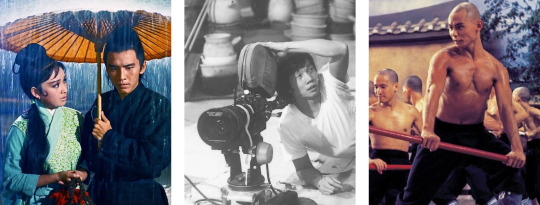


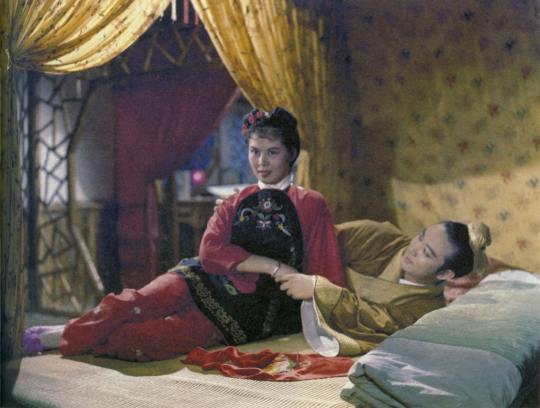
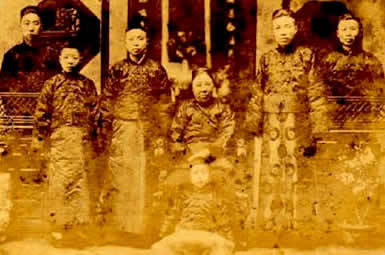

0 notes
Photo

Star-crossed Lovers: The Butterfly Lovers
Are some of us as lovers star-crossed, bound to end in tragedies. And then if we do pursue even our truest of love, we are then defying the stars, would it still be worth it to only end in burning flames. This is the premise of many great tragic lovers through different cultures and ages. This is the story of Romeo and Juliet, Bonnie and Clyde, and also one that you are not familiar with: the Butterfly Lovers.
In Eastern Jin Dynasty China, there is a folklore of a young love that defies the stars’ aberration. The couple of interest are Shanbo Liang and Yingtai Zhu. Yingtai comes from a wealthy family, a rebel of a girl of sort. She wants to go to an academy, going against the tradition and custom that a girl should know her place is in the home. While Shanbo, a boy that Yingtai is destine to meet.
Yingtai convinces her father that if she gets admitted into the academy dressing up as a boy she can attend the school. On her way there to the academy, she meets Shanbo, a student that is also going to attend the same school. They quickly become friends and swore a blood brothers oath to commemorate their bond.
Yingtai studies with Shanbo for the next three years, gradually falling in love with her blood brother. The whole time Yingtai kept her secret that she is in fact a girl from Shanbo even though they sleep in the same dormitory. After three years by each other side and growing an incredible bond between each other, fate has it that Yingtai and Shanbo must part. Yingtai’s father orders her to come home. Though before she leaves, she ploys to become the matchmaker for herself and her love, lying to Shanbo that she has a pretty young sister that Shanbo should marry.
A year has passed and Shanbo after working diligently as a magistrate finally comes to visit Yingtai. Only then when he arrives that he discovers his close companion, Yingtai, is actually a girl, then right there falling in love with her.
Shanbo and Yingtai then go to her father to ask that she be betroth to him. Only then her father reveals Yingtai is already betrothed to a wealthy son of another and if he goes back on this promised arrangement, it would bring shame on the whole family.
Shanbo resigns to that fact and returns home brokenhearted. He later fell ill to his despair and dies. On the day Yingtai is to marry, her procession is to be pass by her lover’s grave, only to stop by a storm when she reaches it. She excuses herself and walks to Shanbo’s grave. She prays for the grave to open up so that she can be united with her truest of love. Then a thunderstorm in the sky broke up and struck the grave splitting it in two. She jumps into the grave and when the people from her procession come, two butterflies fly out. The two lovers are finally united.
Though many grand tales of star-crossed lovers exist in time immemorial, I believe even in the age of social media, we have these great lovers in our time. The stories that My Sassy Girl are based upon is one of them. There are great stories of long distance relationships in YouTube vlogs where people meet the person they fell in love with online. These are star-crossed lovers of sort, though the barriers that are separating each other here are the distance and ocean, literally a physical hurdle to overcome. But every now and then there are emotional vlogs of people actually overcoming these hurdles and meeting their lover. Some even marrying. And it is great for us, knowing that there are true love out there in the world that still exist. And to those star-crossed lovers, may your heart never dim and may the barriers between you and your love be overcome. Good luck.
0 notes
Text
Critical Annotation
I am exploring the idea of ‘The Edge of Love and Pain’ further and intend to embody it in the form of photography. My current research revolves around the polarised feelings that love brings to people, the edge of love and pain, trying to think critically and dialectically about love and pain and present it visually.
The theme of love and pain has been explored by different artists over the years and seems to be a very popular theme, even though it has become slightly dated, I am still fascinated by this theme because love is so relevant to our lives, we love everywhere but often feel pain because of love, and love as a carrier of energy is unseen and untouchable, leaving people at a loss, and as a superior animal, people As a higher animal, people are often entangled in desire, making their love complicated and thus painful, which leads to the question: What is love and what is pain? And what makes them intertwined with each other? And where are their boundaries?
To help my project to expand and think more, I have collected a list of various artworks related to love and pain, both on realistic subjects and emotions and feelings. This is one of the most important points in my review of the artists’ work and documentation. As my projects are visual, most of the works that interest me are also emotionally and visually related, such as books, poems, films, exhibitions, and paintings, which further help me to explore and refine my personal projects.
For example, the classic Chinese work Liang Zhu, in which Liang Shanbo and Zhu Yingtai were martyred for love and eventually turned into butterflies in the feudal social system of the time, is a poignant and moving story, and the butterfly is a metaphor for free love. In this story, there is not only the love of a man and a woman but also the love of their parents, as Zhu Yingtai’s parents use their 'love’ to manipulate Zhu Yingtai and show the other side of love, pain, which leads to the tragedy of the story, and modern times are full of heavy love like that of Zhu Yingtai’s parents, which often leads to pain. The butterfly throughout the story as a symbol brought me the inspiration for my final work. For me, it represents the sacredness of love, as if it represents that I am in love with you and you are free, symbolizing the true nature of love.
In Greek mythology, the rose is the embodiment of the goddess of beauty and the blood of the goddess of love. The rose, with its colorful appearance and the thorns on its branches, is often cited as a metaphor for the bipolar emotions that love brings. The rose is a metaphor for the unique uniqueness of its subjective perspective, a metaphor for the two otherwise separate souls who are no different from any other stranger in the world in each other’s eyes. As the emotional connection builds, we become special, unique to each other, and who is to say that this is not a form of magic. Perhaps love itself is a form of magic.
The above artworks have helped me to think more about the core themes of my project, while the other artworks I have collected and studied have given me a wealth of inspiration to help me complete my final personal project.
0 notes
Text
Review: Butterfly Lovers is the perfect ensemble school drama
Review: Butterfly Lovers is the perfect ensemble school drama


Every character is vibrant and filled with life in The Butterfly Lovers
With a diverse set of characters that grow with each other as they try to find their way in a hierarchical feudal world that is rapidly in decline, the Peter Ho and Dong Jie version of The Butterfly Lovers 梁山伯与祝英台 is one of my to-go feel-good dramas (I stop at some point for obvious reasons). It’s refreshing to see a…
View On WordPress
#Cai Xinqiong#Che Yongli#Chen Cheng#Chen Chun-Liang#Chen Ziyan#Dong Jie#Jiang Hong#Kou Zhenhai#Liang Shanbo and Zhu Yingtai#Ming Hui#Peter Ho#Qu Xin#The Butterfly Lovers#Wan Hongjie#Wang Qianyou#Wang Xiaokun#Xie Yuanzhen#Zhan Xiaonan#Zhang Tianqi#Zhang Yingjun
4 notes
·
View notes
Text
Butterfly Lovers
Liang Shanbo and Zhu Yingtai

Rating: 1/3
Categories: comedy, drama, dub, historical, romance
Zhu Yingtai is a young noblewoman who disguises herself as a man so that she can study academia. While travelling there she meets fellow student Liang Shanbo who she becomes sworn brothers with but quickly ends up falling in love with him. When circumstances force her to return home she reveals her true identity to him and asks him to come get her but can he get there before it’s too late? Has an old Disney movie vibe to it.
Movie
#Butterfly Lovers#Liang Shanbo and Zhu Yingtai#Liang Zhu#1/3#comedy#drama#dub#historical#romance#movie#short series#anime recommendation
3 notes
·
View notes